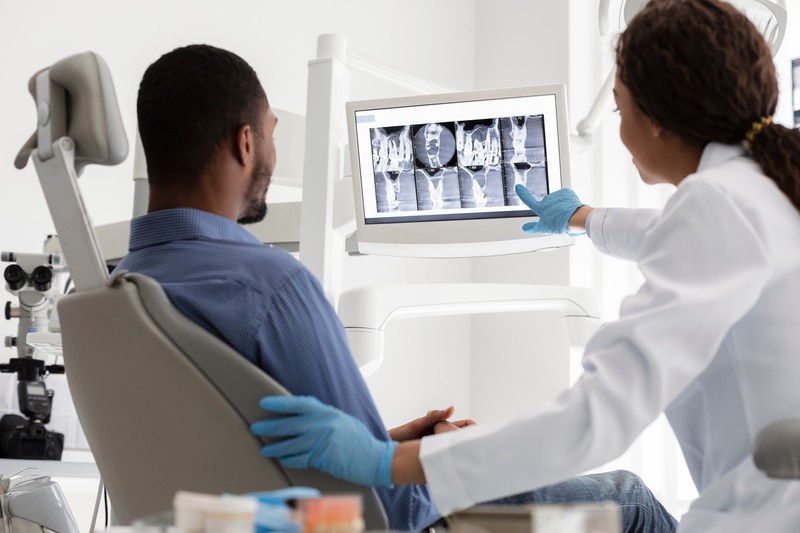
You probably already know that dental X-rays are an essential part of dentistry today. They provide valuable insights into the health of your teeth and the supporting structures that are not visible during a routine dental examination alone. Today, we are looking at what you need to know about dental X-rays, including how they contribute to helping you maintain the optimal oral health your smile deserves.
What are Dental X-Rays?
Dental X-rays (radiographs) are diagnostic images our dental team routinely takes to capture detailed information about your oral health so that our dentists can make informed decisions regarding your dental care. These images use only a small amount of radiation to penetrate the tissues of your mouth, providing our dentists with images of your teeth, roots, jawbone, and other oral structures. These images are classified into two main types: intraoral and extraoral. The former provides a close-up view of your individual teeth, while the latter captures a broader view, including your head and jaw.
Importance of Dental X-Rays
Your dental X-rays play a crucial role in preventive and diagnostic dentistry. In particular, they enable our dentists to detect and diagnose serious oral conditions that may not be visible to the naked eye. These images can help us detect the following:
- Tooth decay
- Cavities
- Infections
- Gum disease
- Impacted teeth
- Bone loss
- Abnormalities in tooth roots or jawbone structure
The good news is that when these kinds of dental problems are found early, they can then be treated effectively and quickly to prevent any further damage and potential complications from developing. Dental X-rays are also used to track the progression of dental conditions, plan orthodontic treatments, and evaluate the success of previous dental procedures.
Innovative Safety Measures
Even though dental X-rays typically involve minimal radiation, safety measures are still followed to ensure minimal exposure. We are pleased to take advantage of advancements in technology that have significantly reduced radiation exposure with digital X-rays, which require lower radiation doses compared to traditional film X-rays and panoramic X-rays or three-dimensional (3-D) images.
With digital radiography, dental X-rays are taken quickly, comfortably, and conveniently. Our digital X-rays use a digital sensor to capture images of your teeth without film so you aren’t exposed to unnecessary amounts of radiation. They also allow our dentists to view the images right away on monitors in the treatment room. Our panoramic X-ray machine is also quick and comfortable for you, as the machine rotates around your head to give our dentists high-definition, nearly instantaneous images to help us accurately evaluate your oral health.
Frequency of Dental X-Rays
The frequency of dental X-rays depends on your individual situation, such as age, oral health history, and current oral health condition. Typically, new patients may undergo X-rays as part of the initial examination to assess and address any current conditions. Follow-up X-rays are then recommended based on your needs.
Schedule Your Next Dental Visit
As you can see, dental X-rays are essential tools in dentistry, providing valuable diagnostic information that helps us detect and treat your oral health conditions effectively. If you live in the Romeoville, Naperville, or Montgomery, Illinois areas, we invite you to schedule your next dental visit with our Valley View Dental team. Treating dental conditions early is ideal, as it often involves minimally invasive and least costly measures. If it has been a while since you visited your dentist, or you have noticed some dental issues developing, please call us today and schedule an appointment!


